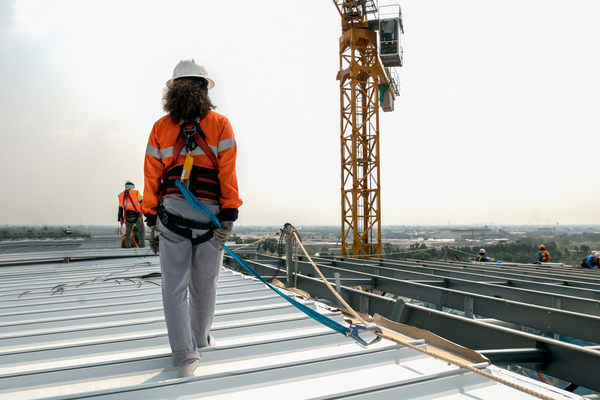'We’re seeing the largest effect in the groups that most need an improvement,' says researcher

As of Oct. 1, 2017, all construction workers in Ontario who work at heights were required to have completed new Ministry of Labour training — and it seems they did. According to research from the Institute for Work & Health (IWH) in Toronto, 420,000 Ontario workers had taken the training by the time the regulation came into full force, representing 90-per-cent compliance.
The researchers found that this training paid off, noting a “statistically significant but modest impact” on lost-time claims for falls from height in the construction sector. When comparing the lost-time claim rates from 2012 to 2014 (before the training was mandated) with those from 2017 (two years after the training was introduced), IWH found a 19.6-per-cent decline.
The effect of the training was greatest in small construction firms with less than five employees as well as in Workplace Safety and Insurance Board (WSIB) rate groups with a higher incidence of lost-time claims (which included high roofing, masonry and homebuilding).
“We’re seeing the largest effect in the groups that most need an improvement, which is a good thing,” said Lynda Robson, IWH scientist and one of the researchers on this project.
The quality of the Work at Heights training seemed to be an improvement from previous fall protection training offered before the regulatory change. According to a survey of training providers by IWH, 71 per cent said the new training offered more practical hands-on skill acquisition than the previous offering. More than one-half (52 per cent) said the Work at Heights training provided “much better” overall preparation to students than the previous fall protection training, with 24 per cent saying it was “somewhat better” and 19 per cent saying it was “about the same.”
All providers for the new Work at Heights training needed to be vetted by the Ministry of Labour and were identified as approved providers on its website.
Aside from having their employees trained, construction employers took action as a result of the new training requirement:
• 40 per cent purchased new equipment (such as harnesses and guardrails)
• 37 per cent modified or created a fall rescue plan
• 33 per cent inspected their equipment more often
• 28 per cent reported their employees tie off more often
• 27 per cent said their supervisors are taking action to prevent falls more often.
IWH also surveyed the knowledge that workers gained from the training. More than one-half (52 per cent) said they learned a lot of new information, with 34 per cent saying they learned some new information. More than 80 per cent of respondents said they were more confident in picking the right lanyard and setting up a travel restraint after completing the Work at Heights training. More than 70 per cent said they were more confident in knowing when to tie off, finding a good place to tie off and making safety suggestions to their supervisor.
The IWH looked at the average safety practice scores before and after training and found a meaningful and statistically significant change for 10 out of the 12 elements, which included checking the site for hazards, maintaining 100-per-cent tie-off and not taking shortcuts that would risk a fall.
“We’ve seen a large impact on knowledge and what we would classify as a medium-sized, moderate impact on practices, and that’s what we expect from training,” said Robson. “That’s what the research literature tells us about the effectiveness of health and safety training.”
The majority of individuals who took the training were from the construction sector (78 per cent), but there were also some from other industries, including utilities, manufacturing and transportation/warehousing. Interestingly, there was also a decline in lost-time claims for falls at height from the manufacturing and retail/wholesale trade sectors. This “spillover effect” from the construction sector to other sectors provided an additional benefit of the regulation, Robson said.
“They didn’t have to [complete the training] in many cases, but they did anyway because it was being promoted, because they thought it was coming to the industrial sector anyway, because they wanted to use the gold standard that was out there, because they wanted their employees to be flexible to work on both manufacturing tasks and constitution tasks.”
This article originally appeared in the August/September 2019 issue of COS.





